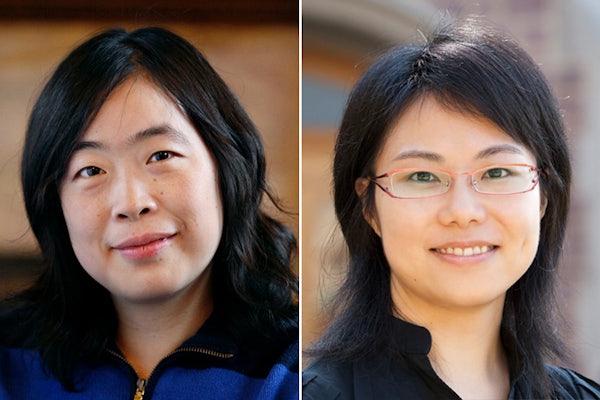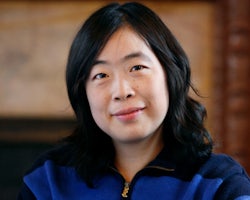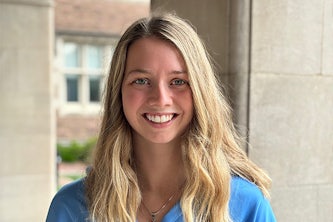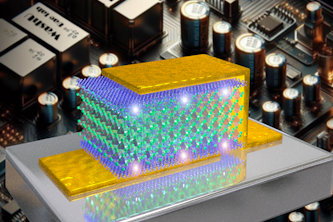Opening up the electromagnetic spectrum
New parity time symmetric system opens up range of wavelengths to researchers, engineers

Researchers from the labs of Xuan “Silvia” Zhang, associate professor, and Lan Yang, the Edwin H. & Florence G. Skinner Professor at the McKelvey School of Engineering at Washington University in St. Louis, have developed the first fully integrated parity-time symmetric electronic system.
And it can be made without the use of exotic materials, only requiring the same standard microelectronic fabrication technology used today for common integrated circuits.
The research was published March 17 in the journal Nature Nanotechnology.
PT-symmetric systems allow for energy flow to be manipulated in surprising new ways. Currently, they can operate in a limited range — either at the extremely low-frequency acoustic domain or the extremely high-frequency optical domain.
This new technology implemented a concept with remarkable mathematical properties originating from quantum physics into an integrated circuit. It opens up a new part of the spectrum for research in the giga- to terahertz range.
“Our work opens this middle part (of the spectrum) that covers crucial microwave and millimeter wave applications; we fill the gap,” Zhang said.
“No one in the world is able to build PT-symmetric systems that cover this frequency range.”
The key to these systems is the ability to precisely balance the energy loss of one resonator with the gain of another, coupled resonator. This special point of equilibrium is PT symmetry, and it allows for new and powerful ways to maneuver the flow and localization of energy.
An image reflected in a mirror has parity transformation — in the reflection, a right hand is reversed and becomes a left hand, and vice versa. A video played backward is an example of time reversal — the events in the video move backward in time.
If both transformations are done at the same time and “cancel each other out” — the system looks the same as it did before the transformations — then that system is said to have PT symmetry.
Examples of different types of symmetry. (Image: Murch laboratory)
Such a concept has been utilized in coupled photonic resonator systems to develop new strategies to control light flow, such as nonreciprocal light transmission.
Being able to manipulate an additional swath of the electromagnetic spectrum opens up the possibility of new discoveries and technologies, said Weidong Cao, a postdoctoral research associate in Zhang’s lab.
Practically, these kinds of systems are important components for radar, wireless communications and power-transfer systems. Right now, the relevant parts require large, magnetic cores. “But now we can shrink them down to an integrated circuit chip the size of a fingernail,” Zhang said.
Thanks to a novel fabrication technology, the system is scalable, making it easier to take advantage of new functionality in existing technologies.
“Integrated circuit fabrication and our circuit design allow you to build specifically for different areas of the electromagnetic spectrum,” Cao said.
“Our results show that the introduction of PT symmetry into integrated circuit technology could benefit a broad range of chip-based applications such as frequency modulation and manipulation of microwave propagation.”
Yang said she is impressed with the potential ability of physics to so broadly and immediately impact technology.
“It’s exciting to demonstrate the superior performance and function enabled by a new design guided by fundamental science in a platform that has been widely adopted in industry,” she said.
This work was supported in part by National Science Foundation grants no. CNS- 1657562, no. CCF-1942900 and no. EFMA1641109
Co-authors also include researchers affiliated with Georgia Tech and ETH-Zurich.




